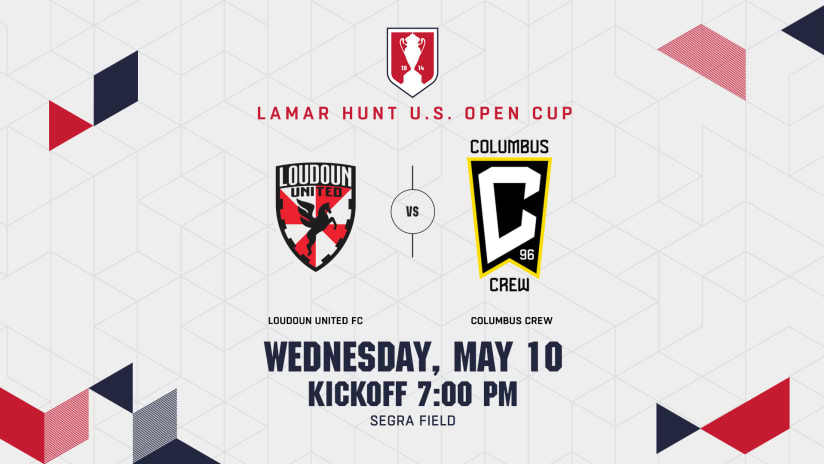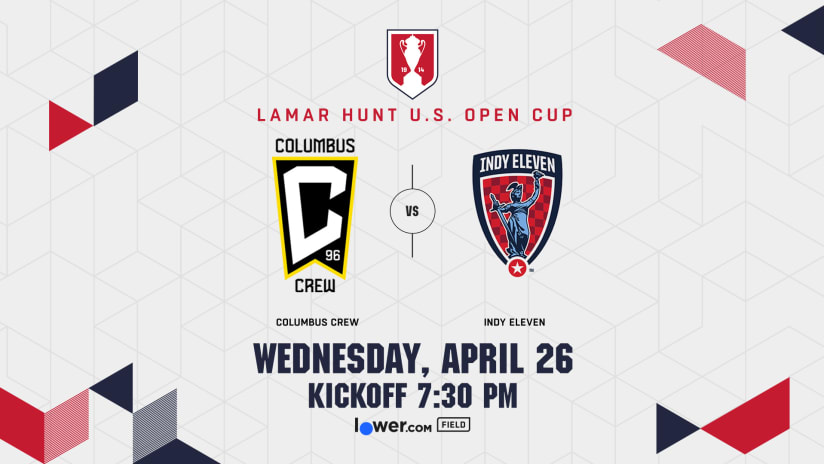One of the joys of the Lamar Hunt U.S. Open Cup, if you are a Columbus Crew fan, is that it’s an opportunity to reflect on the tournament’s namesake. It’s an annual touchstone to our club’s history and values.
No, despite its name, Lamar Hunt did not invent the U.S. Open Cup, whose existence predates his own by decades. One could be forgiven for assuming that Lamar invented it, though, as he’d created and founded so many enduring things. The American Football League, which later merged with the NFL. The name Super Bowl. The term “soccer-specific stadium” and the building of Historic Crew Stadium, the proof-of-concept catalyst for Major League Soccer’s stadium construction boom that has shown no signs of abating more than two decades later.
Lamar Hunt’s name is associated with so many successes that he’s been inducted into the professional football, tennis, and soccer Halls of Fame. Among his many successes is our very own Columbus Crew.
It’s impossible to overstate Lamar Hunt’s impact on professional sports in Columbus and the soccer club we cherish.
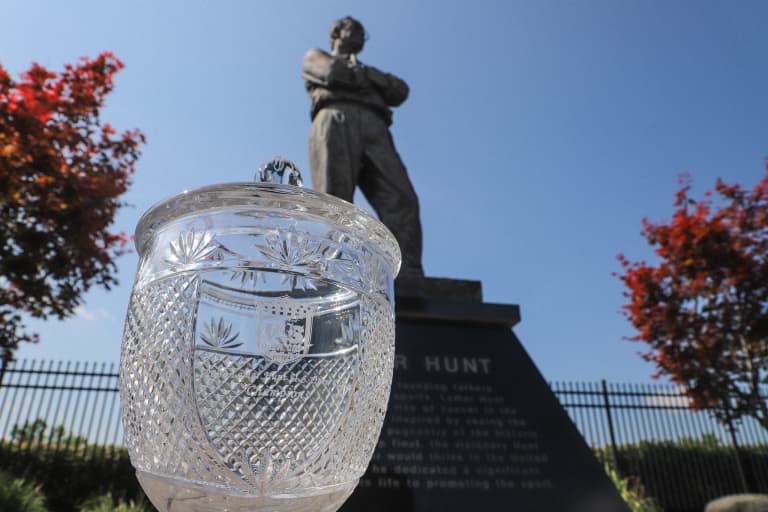
When Columbus was awarded the first team in Major League Soccer on June 15, 1994, it was not only perceived as a college town thoroughly dominated by Ohio State football, but also as a notorious graveyard for minor professional teams in various sports. The last time Ohio’s capital had been home to a top-tier league was in 1935 with the Columbus Elite Giants of the Negro National League. Prior to Negro League baseball, which was deservedly but belatedly conferred major league status in 2022, you’d have to track back another decade to find Columbus in a top league. The NFL’s Columbus Tigers, the black & gold team formerly known as the Panhandles, folded following the 1926 season after racking up a grand total of just 13 victories in seven NFL seasons. For more than half a century after the likes of the Elite Giants and Tigers, random teams in random leagues in random sports would come and go, but Central Ohio’s big-league status remained a dormant relic.
Civic leaders hoped to change that by getting in on the ground floor with Major League Soccer. Despite the successful campaign to land an MLS team, skepticism still took hold. To many, it was assumed that this Columbus MLS team would surely meet the same fate as the Columbus Magic, Columbus Capitals, Columbus Horizon, Columbus Thunderbolts and Ohio Glory, to name just five Central Ohio pro sports teams that came and went in the 1980s and 90s, prior to the MLS announcement.
Such skepticism was somewhat tempered by the revelation that the club would be operated by American sports legend Lamar Hunt. There would be no guarantee of success, of course, but the endeavor gained undeniable gravitas from its association with Lamar, who was undeterred by the skeptics. After all, the Buckeyes showed just how passionate the city could be about a team that truly represented Columbus on a national—and in the case of soccer, possibly international—stage.
“Columbus is a great sports town, and my father knew that when he founded the Crew,” said Clark Hunt, Lamar’s son. “He had a number of conversations with the city leadership, including mayor Greg Lashutka, about bringing a professional soccer team to Columbus. Lamar knew that the city of Columbus was deserving of a professional sports team but didn’t have one yet. He saw an opportunity to bring a pro sports team to this vibrant city, and the fans in Columbus responded tremendously.”
Lamar had faith in Columbus before the first ball was ever kicked. As he told the Columbus Dispatch in 1995, “Come 75 years, we’ll look back and say this sport is a tremendous success and Columbus will be a part of that success.”
What separates the visionaries from the rest of us is that they see what can and will be, whereas others see what is and was, and therefore cannot become. Skeptics saw a town dominated by Ohio State. Lamar saw a city growing from transplants who may want a professional team to call their own. Skeptics saw a pro sports graveyard. Lamar saw a sports niche not filled by the more established Cleveland and Cincinnati pro teams, so there would be no competing allegiances, plus there would be an opportunity for statewide growth. Skeptics saw an undersized, untraditional, minor-league sports market. Lamar Hunt saw a rapidly growing underdog yearning to achieve major league status. Going back to his founding of the AFL and his longtime involvement with American pro soccer, Lamar loved being an underdog. He loved succeeding as an underdog. What could be more underdog-ish than fielding the very first team in a fledgling league in an untraditional market in a sport that had failed professionally in America many times over?
Lamar Hunt chose Columbus because Columbus spoke to who he was. It was an unassuming city for an unassuming man.
The tales of Lamar Hunt’s unassuming nature are legendary. He always flew coach on discount airlines, not in a cushy private jet. He rented regular cars he drove himself instead of using a limo service. He’d personally work a broom and dustpan or bend over to pick up trash around the stadium. He’d get down on his knees in the dirt to do gardening in the stadium’s landscaping. He’d wait in line for a concession stand hotdog like anyone else and walk the concourses seeking fan feedback on how he could make their experience better. There was not a single molecule of elitist pretense to the man.
If you’re thinking it sounds like he’d be the type of person who’d be mortified at the prospect of having the nation’s oldest soccer tournament named after him, you’d be correct. Given his enormous contributions to the North American Soccer League and the launching of Major League Soccer, and given that he had just built the first soccer-specific stadium in MLS, U.S. Soccer wanted to do something special to recognize Lamar’s contributions to the sport, even beyond his place in the U.S. Soccer Hall of Fame. Knowing that he’d graciously decline any such gesture if it were offered to him, Lamar’s wife, Norma, and the Hunt family clandestinely worked with U.S. Soccer when the federation wanted to add his name to the tournament.
“Humility was Lamar’s greatest trait,” Clark said. “He was endlessly humble, and he never wanted to take credit for something that he saw as a group’s achievement. That being said, how appropriate that U.S. Soccer named its greatest trophy after him, because nobody has had a bigger impact on soccer in the United States than Lamar Hunt.”
Layering onto the significance of their decision, the U.S. Soccer Board held a meeting on May 15, 1999, at the grand opening of Columbus Crew Stadium, and voted unanimously to rename the U.S. Open Cup in Lamar’s honor for his lifetime contributions to the sport in America. The change was announced in September of 1999, prior to Crew Stadium hosting that year’s U.S. Open Cup final.
“The U.S. Open Cup is what America is about,” Lamar told the Columbus Dispatch in advance of that year’s David vs. Goliath championship clash between the Colorado Rapids and the second-division Rochester Rhinos. Rochester prevailed by the score of 2-0, and to this day, they are the only lower-division team to win the U.S. Open Cup since the founding of Major League Soccer.
Fittingly, as soon as the tournament was renamed to honor Lamar Hunt, another pro sports underdog had its day.
The underdog emerging victorious in 1999 may have been fitting, but it wasn’t ideal. The Rhinos scored two late goals to eliminate the Crew in the semifinals, denying Columbus a chance to play for the 1999 Lamar Hunt U.S. Open Cup title at Historic Crew Stadium.
“We had our invitation to the big dance,” Lamar lamented to the Columbus Dispatch, “but we didn’t accept it.”
The Crew next made a deep Open Cup run in 2002. After a 3-0 home win over the Richmond Kickers and a 2-1 road win against the MetroStars (since renamed the New York Red Bulls), the Crew pulled off a heart-stopping 3-2 overtime home win against the Kansas City Wizards in the semifinal round. Trailing 2-0 in the 75th minute, Columbus rallied on a 76th minute goal by Edson Buddle, an 89th minute goal by John Wilmar Perez to force golden goal overtime, and then the golden goal itself, also scored by Perez in the 108th minute. A stunning comeback win of that magnitude in a semifinal match is Team of Destiny stuff.
Destiny was put to the test on October 24, 2002. The Crew hosted the LA Galaxy, who had won MLS Cup just four days earlier, for a chance to claim the 2002 Lamar Hunt U.S. Open Cup title.
By that time, the Crew had been a team of near misses. Four times they had reached the Eastern Conference Finals yet did not have a single MLS Cup appearance to their name. They’d lost the 1998 U.S. Open Cup Final in Chicago and suffered that heartbreaking semifinal loss to Rochester in 1999. It was the seventh year of the club’s existence, and original Black & Gold stalwarts like Brian McBride, Brian Maisonneuve, Mike Clark, and Robert Warzycha were running out of time to punctuate and eternally validate their memorable era of Crew soccer with a trophy.
Freddy Garcia scored in the 30th minute to give Columbus a 1-0 lead that carried over into the late stages of the game. Playing down a man after a Chad McCarty red card, the Crew hung on for dear life as the MLS Cup champs threw everything at them. In his final act as a professional player, Crew legend Robert Warzycha cleared a slowly rolling shot by future Crew hero Alejandro Moreno out of the goalmouth in the closing moments to preserve the 1-0 victory for the Crew’s first-ever championship of any kind.
As the players celebrated their own achievement, they were fully cognizant that the victory was also bigger than themselves. They won the Lamar Hunt U.S. Open Cup in the soccer-specific stadium built by Lamar Hunt and got to celebrate on the podium with none other than Crew owner Lamar Hunt.
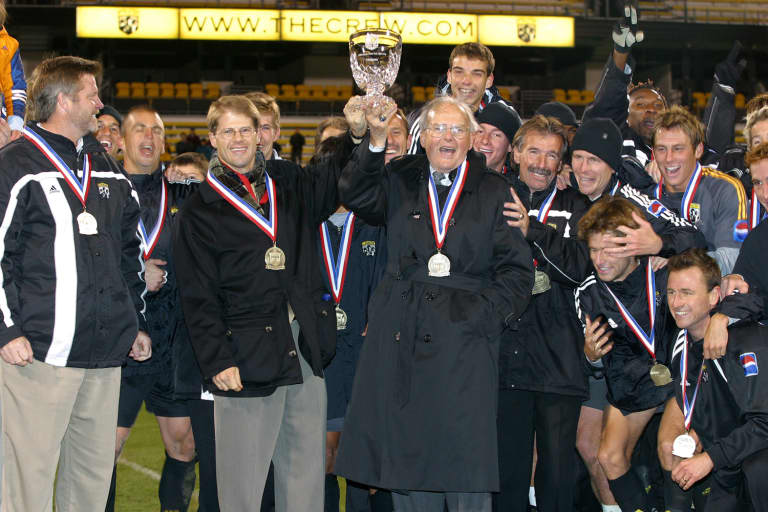
“It was an awesome night,” McBride told me in 2018 “It’s one of those things where you’d been wanting to win something for so long, and then to know that the trophy was named after Lamar, who everybody just loved. It was great to finally bring home some silverware to the club. To have Lamar there was even better.”
The players felt it because the love and respect was so genuine. The Hunt family felt it, too.
“Over the years, a number of trophies have been named after my father.” Clark said. “In fact, today there are trophies in pro football, college football, soccer and tennis that bear his name. But when the Crew won the Lamar Hunt US Open Cup in 2002, it was the first time that one of his teams won a trophy with his name on it. That was an incredibly special moment for our family. And it was even more special to win the match at Columbus Crew Stadium, which was the nation’s first soccer-specific stadium and a cornerstone in the development of Major League Soccer. So I know that winning that Cup was a very special moment for him, and for my entire family.”
It’s been 21 years since that magical night at Historic Crew Stadium. It’s going on 17 years since Lamar Hunt passed away. The Crew are now in their second full season beyond playing at Historic Crew Stadium. All that may seem to be in the past, but when you arrive at Lower.com Field on Wednesday for the Open Cup match against Indy Eleven, when you look around the stadium and when you look at the Crew on the field, there is and always will be a direct thread to Lamar Hunt. It’s because Lamar Hunt had faith in soccer and faith in Columbus.
I recall the first time I met Lamar Hunt. It was back in 1997, in advance of the Dublin stadium vote, which was his second attempt to secure the Crew’s future in Columbus. I thanked him for not giving up on Columbus and the Crew after the downtown stadium vote had failed.
“Well, Steve, let me explain it like this,” Lamar said in that soft Texas drawl of his. “In the time the Crew has been in Columbus, there are many people who have bought tickets, come to games, and have become attached to this club. They are a part of the Columbus Crew. I owe it to those people to do everything I can to keep the club here.”
He was true to his word even after Dublin became the second failed ballot initiative denying the Crew the new stadium they so desperately needed. Upcoming renovations to Ohio Stadium would render it unusable for three consecutive summers, leaving the Crew homeless. Hours after the Dublin vote, the late Jamey Rootes, then the Crew’s President and General Manager, observed Lamar running his fingers over a wall map at the airport McDonald’s. Lamar was trying to find yet another location to build the Crew a proper home. When Rootes inquired if that meant the Crew weren’t going to relocate, Lamar looked at him like he was being ridiculous for even contemplating the notion and said, “Why in the world would we do that?”
Lamar’s positivity and determination manifested his desired outcome. Six months later, Hunt Sports Group broke ground at the Ohio Expo Center. Historic Crew Stadium, privately financed by the Hunt family, would become the first soccer-specific stadium in MLS history. It saved the Crew. Additionally, the successful proof of concept in Columbus helped save the league by showing the path forward.
When the Crew faced another existential threat two decades later with the intended relocation to Austin, Crew fans could have accepted their fate, which seemed inevitable. But why in the world would they do that? #SaveThe Crew was born. The fans led their effort with the same positivity and determination embedded in the Crew’s DNA by Lamar Hunt. The team’s well-connected doctor, Pete Edwards, who worked for Lamar all those years, carried the torch for Columbus at the highest levels, seeking a solution while displaying similar faith and persistence in the face of long odds.
When the Haslam and Johnson families joined forces with the Edwards family to save the Crew and construct Lower.com Field, they poured not only considerable financial resources, but also their hearts into something first envisioned by Lamar Hunt more than two decades earlier. Lamar’s original dream for Columbus was to have MLS and NHL teams playing in state-of-the-art facilities in a vibrant downtown sports district. There were many twists and turns in Lamar’s lifetime and beyond, and even though none of it initially went as he’d originally planned it in the 1990s, Lamar’s ultimate pro sports vision for Columbus is now a successful reality. Columbus rightfully celebrates the McConnell and Haslam/Johnson/Edwards families for their indisputably essential commitments to the Blue Jackets and Crew, respectively, as none of what the city enjoys today would have been possible without them. But it’s also true and worth remembering that Lamar Hunt dreamed big and invested heavily in putting underdog Columbus on the path to where it is now. It’s highly unlikely any of this would have been possible without_ him_ either. This is especially true of his beloved Crew.
“Lamar Hunt’s legacy in sports is deservedly recognized by multiple Hall of Fames and championship trophies, and he achieved that because his focus was always on what was best for fans and the growth of the game above how me might benefit,” said Dee and Jimmy Haslam. “Just like Crew supporters, he understood the passion and potential for soccer in Columbus, which is what inspired us to make sure the club stayed in its rightful home. Lamar is one of the most significant contributors to the sport’s history in Ohio, and as he did with Historic Crew Stadium, it is an honor as stewards of the club to share his commitment to provide supporters with the experiences they deserve at Lower.com Field.”
Contemplating his father’s original downtown stadium vision becoming a reality all these years later, Clark said, “I think Lamar would be so excited for passionate Crew fans to have a state-of-the-art stadium in the heart of their city.”
Lamar Hunt’s statue may be looking over Historic Crew Stadium, but his spirit and legacy are also very much part of Lower.com Field in the present day. It doesn’t take the Crew’s participation in the Lamar Hunt U.S. Open Cup to make us reflect on his importance to Columbus and the Crew, but U.S. Soccer’s 1999 renaming of the tournament in Lamar Hunt’s honor has nonetheless ensured that every single spring, year after year, we always will.
Single-Match Tickets
Secure your seat to cheer on your Columbus Crew at Lower.com Field this season!
